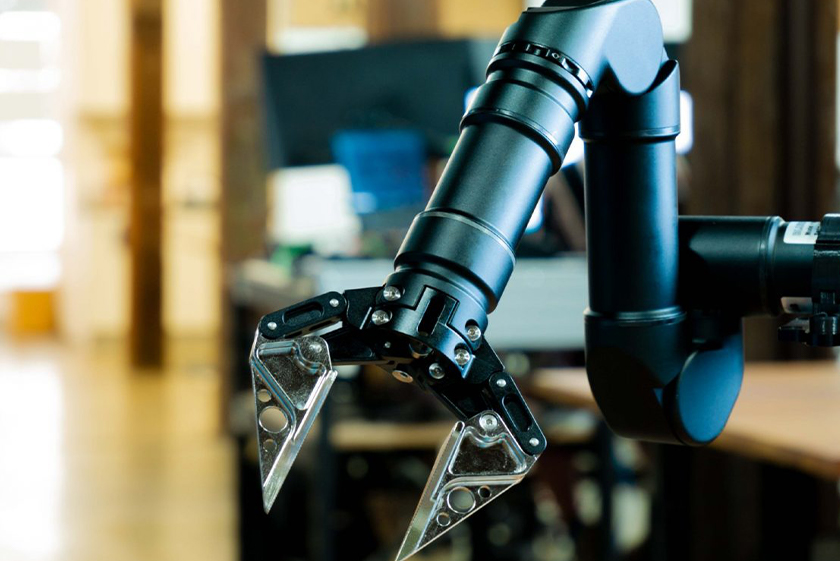
- This event has passed.
Underwater Manipulator

The main objectives of underwater robotic arms encompass a wide range of applications, each tailored to harness the potential of these sophisticated machines. These goals include:
- Precision Manipulation: Underwater robotic arms are engineered to perform delicate, precise tasks with unparalleled accuracy.
- Inspection & Maintenance: They are crucial for inspecting and maintaining underwater structures such as pipelines, offshore platforms, and submerged equipment.
- Scientific Research: These robotic arms assist scientists in conducting deep-sea research, collecting samples, and studying marine life.
- Search & Recovery: They play a pivotal role in search and rescue missions, recovering objects or individuals from underwater environments.
- Environmental Monitoring: Underwater robotic arms contribute to monitoring and preserving aquatic ecosystems, tracking changes in water quality, and studying marine biodiversity.
- Archaeology & Preservation: They aid archaeologists in exploring underwater archaeological sites and preserving submerged historical relics.
- Subsea Construction: These arms are utilized in constructing and maintaining underwater infrastructure, such as cables and pipelines.
- Remote Operation: They enable remote operation from the surface, reducing the need for human divers in hazardous conditions.
- Autonomy: Advancements in autonomy allow these robots to perform tasks independently and adapt to changing conditions.
- Safety & Reliability: Ensuring the safety of both the equipment and the environment is paramount, and reliability is crucial for mission success.
Challenges Facing Underwater Robotic Arms:
However, the utilization of underwater robotic arms is not without its challenges. These machines must contend with:
- Extreme Conditions: Operating in underwater environments exposes robotic arms to extreme pressure, temperature, and corrosive saltwater.
- Limited Visibility: Poor visibility can make navigation and object recognition difficult, increasing the risk of collisions.
- Communication Difficulties: Underwater communication is constrained, impeding real-time data transfer and remote control.
- Navigation: Navigating in three dimensions and avoiding obstacles is complex, especially in confined spaces.
- Power Supply: Energy-efficient systems are essential for extended missions, as power supply constraints can limit operational duration.
- Corrosion Resistance: Prolonged exposure to saltwater requires corrosion-resistant materials and protective coatings.
- Biofouling and Maintenance: Biofouling (accumulation of marine organisms) and regular maintenance can disrupt operations.
- Depth Limitations: Many robotic arms have depth limitations that hinder deep-sea exploration.
- Skilled Personnel: Complex operations often necessitate skilled personnel for control and troubleshooting.
- High Costs: The development, deployment, and maintenance of underwater robotic arms can be prohibitively expensive.
- Regulatory Compliance: Complying with environmental regulations and obtaining permits can pose challenges.
Our Solution:
To address these challenges effectively, our solutions for underwater robotic arms encompass the following strategies:
- Corrosion Resistance: We utilize advanced materials and coatings to ensure durability in corrosive environments.
- Sensors and Communication: Enhanced sensors and communication technologies improve navigation and obstacle avoidance.
- Energy Efficiency: We focus on energy-efficient systems to extend mission durations and reduce the need for frequent recharging.
- Anti-Biofouling Measures: Implementing anti-biofouling coatings reduces maintenance and minimizes downtime.
- Deep-Sea Exploration Tools: Developing tools for deep-sea exploration expands operational capabilities and allows for discoveries in previously inaccessible areas.
- Skilled Operator Training: Offering specialized training programs for operators ensures efficient handling of complex tasks.
- Cost-Effective Design: We adopt cost-effective design and manufacturing approaches to make underwater robotics more accessible.
- Regulatory Compliance: We maintain strict compliance with environmental regulations through collaboration with relevant authorities.
The Results:
The implementation of these solutions yields several significant outcomes:
- Improved Durability: Underwater robotic arms exhibit improved durability and reliability, even in extreme conditions.
- Enhanced Sensors: Enhanced sensors and communication technologies lead to more accurate operations and obstacle avoidance.
- Extended Mission Durations: Energy-efficient systems extend mission durations, reducing the need for frequent maintenance.
- Reduced Maintenance: Anti-biofouling measures reduce the frequency and complexity of maintenance tasks.
- Deep-Sea Exploration: Deep-sea exploration capabilities result in groundbreaking discoveries in previously uncharted territories.
- Efficient Operations: Skilled operators efficiently handle complex tasks, enhancing overall mission success.
- Cost-Effective Design: Cost-effective design practices make underwater robotics more accessible to a broader range of applications.
- Regulatory Compliance: Adherence to regulatory standards ensures responsible and sustainable underwater exploration and industrial applications.
These results collectively advance the fields of underwater exploration, scientific research, and industrial applications, contributing to a better understanding of our underwater world and its preservation